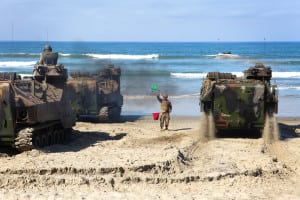
When the Marine Corps decided to buy a series of increasingly capable amphibious combat vehicles (ACV) it planned on earlier versions being optimized for ground combat ashore with the understanding that cost could be shaved by dialing down appetites for performance through the water.“The objective is for the ACV to have a swim capability of about 12 miles,” Manny Pacheco, a spokesman for the Marine Corps Land Systems program office, told Defense Daily in an email. “ACV1.1 does NOT have…

 By
By 











